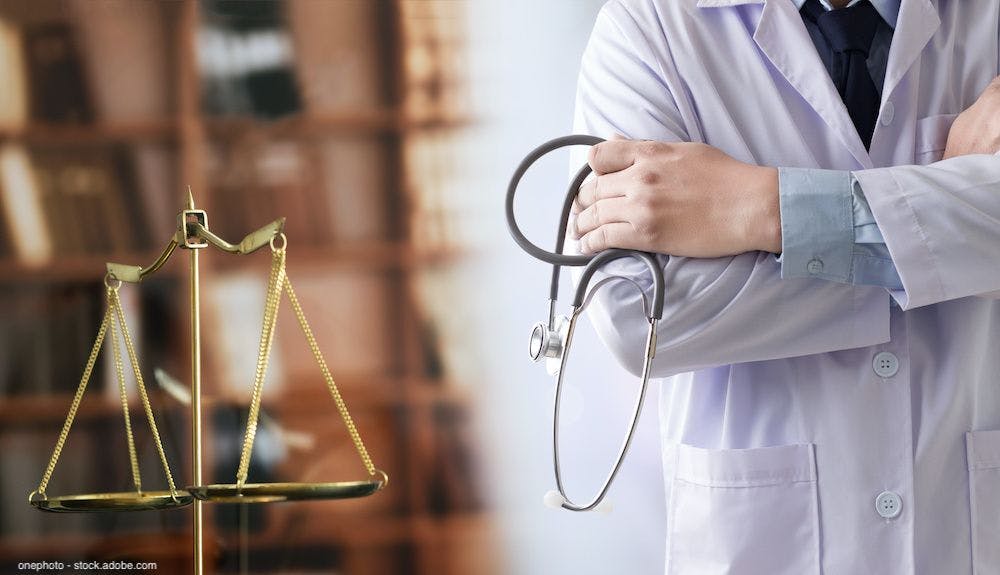Publication
Article
Urology Times Journal
Efficacy, safety of rechargeable SNM device for OAB sustained at 2 years
Author(s):
“The 2-year results are very impressive and underline what SNM can offer to patients with UUI," said Andrea M. Pezzella, MD.
Results from 2 years of follow-up in a prospective clinical trial demonstrate that sacral neuromodulation (SNM) using a rechargeable device (Axonics) provides durably safe, effective treatment for urinary urgency incontinence (UUI), according to the latest report from investigators in the ARTISAN-SNM trial (NCT03327948).1
“The 2-year results are very impressive and underline what SNM can offer to patients with UUI. The clinical outcomes, along with the high rate of patient satisfaction, are testament to the effort the manufacturer invested into developing this technology,” said Andrea M. Pezzella, MD. “The rechargeable device has really raised the bar in the SNM treatment space. I am confident that the results of the study will raise awareness and encourage more physicians to adopt this therapy for long-term management of patients with UUI.”
Pezzella is medical director of Southern Urogynecology in West Columbia, South Carolina, and lead author of the published paper summarizing the 2-year outcomes of the ARTISAN-SNM trial. Patients were enrolled if they had 4 or more UUI episodes in a 3-day diary, including 1 or more episodes per day. A total of 129 patients (98% female) aged 21 to 86 years underwent device implantation in a single, nonstaged procedure.
Among 121 patients who completed the 2-year follow-up visit, 93% were judged to be “therapeutic responders” based on achieving a 50% or greater reduction in UUI episodes in a 3-day period. Eighty-two percent of the responders achieved at least a 75% reduction from baseline in UUI episodes, and 37% were dry (100% reduction). Mean number of UUI episodes per day fell from 5.6 at baseline to 1.0 at 2 years. There were no correlations between patient responses and either frequency of daily UUI episodes or time since diagnosis. “Particularly striking is that the responder rate was 88% in the rigorous as-treated analysis that included all study participants and classified anyone who had undergone explantation or exited the study for any reason as treatment failures,” Pezzella told Urology Times®.
Health-related quality of life was evaluated using the validated International Consultation on Incontinence Modular Questionnaire Overactive Bladder Quality of Life questionnaire and showed an improvement from baseline that was both highly statistically significant and clinically meaningful. Statistically significant improvements were also achieved in all subscale scores.
Responses on patient satisfaction questionnaires showed that at 2 years, 94% of participants were satisfied with the therapy and 93% said they would undergo the therapy again with the same expected results. Questions on device recharging showed 91% of participants considered it easy and 94% rated the frequency and duration as acceptable. Almost all participants (98%) reported recharging the device no more than once a week, and the duration of recharging was less than 1 hour for 88% of participants. These measures were stable throughout the 2-year follow-up.
“The patient satisfaction data should dispel any concern that patients would consider the need for recharging the device difficult, inconvenient, or bothersome, and an age-based analysis showed no differences comparing participants who were older than 65 years with their younger counterparts,” Pezzella said. “Recharging electronic devices is a fact of modern living, and with its short and infrequent charging sessions, the rechargeable SNM unit is very user-friendly.”
There were no serious procedure- or device-related adverse events (AEs). The most common device-related AE was uncomfortable change in sensation or magnitude of stimulation (9%), which was resolved through remote adjustments to the system. “The take-home message is that the rechargeable SNM has a very favorable safety profile, and the high rate of success has been, at least for me, a game changer in SNM that proves to be an invaluable treatment option for our patients,” Pezzella said.
Formal follow-up of patients enrolled in the ARTISAN-SNM trial has been completed. The manufacturer has established a postmarketing patient registry and will use the data collected to evaluate the real-world safety and efficacy of the rechargeable SNM system.
Reference
1. Pezzella A, McCrery R, Lane F, et al. Two‐year outcomes of the ARTISAN‐SNM study for the treatment of urinary urgency incontinence using the Axonics rechargeable sacral neuromodulation system. Neurourol Urodyn. 2021;40(2):714-721. doi:10.1002/nau.24615

Newsletter
Stay current with the latest urology news and practice-changing insights — sign up now for the essential updates every urologist needs.

























